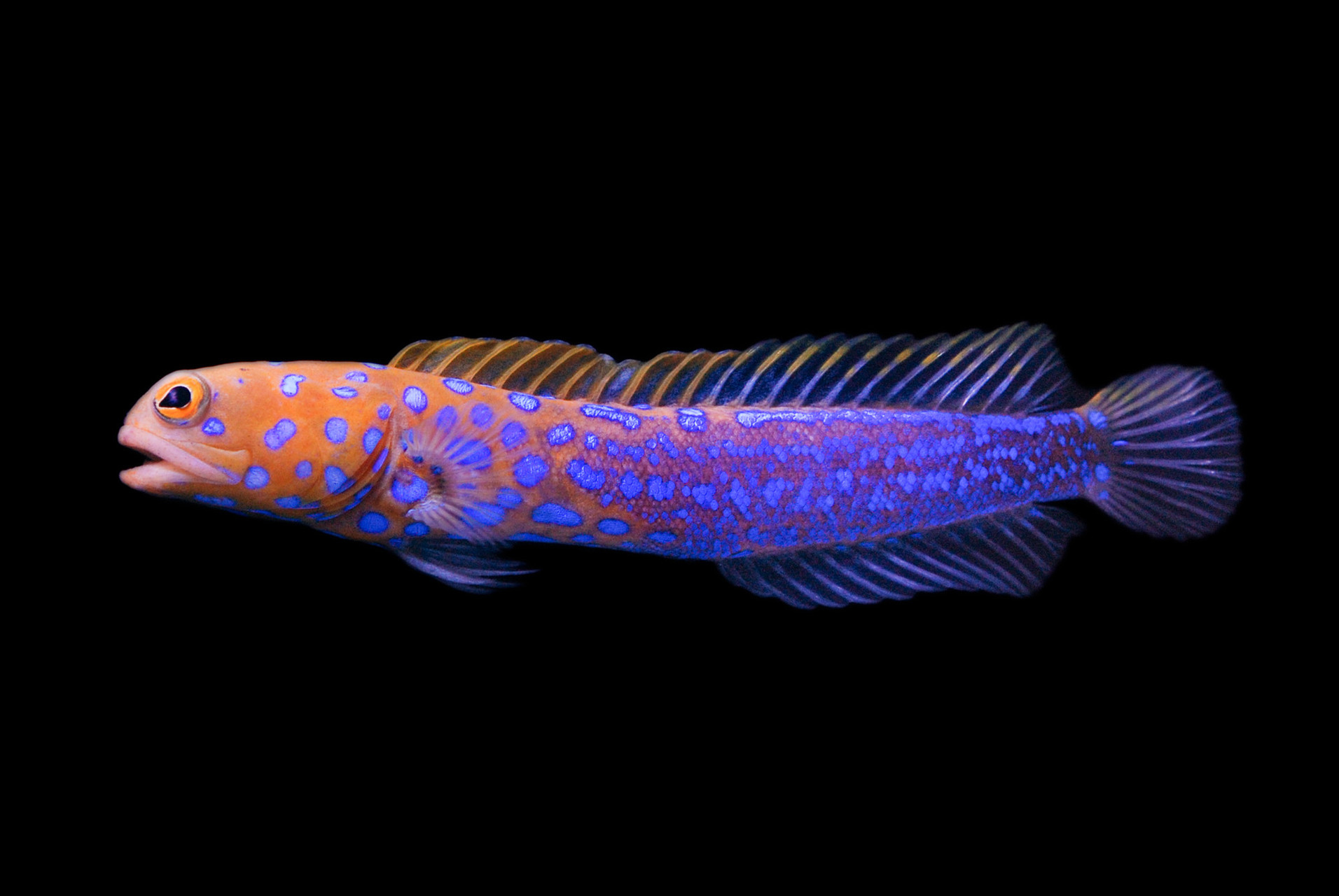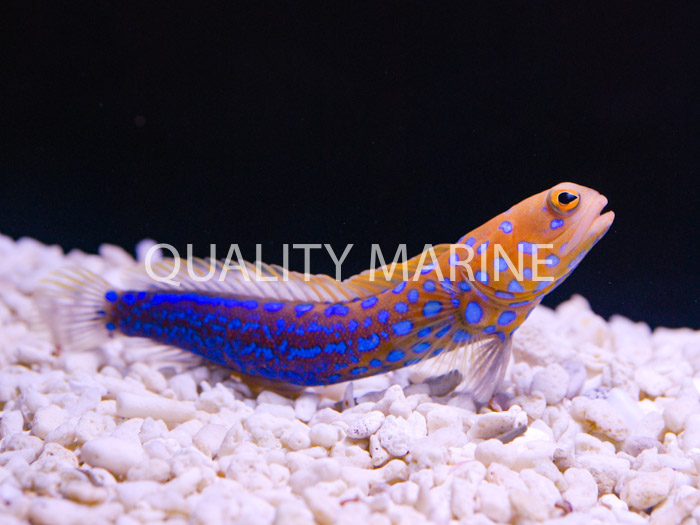Blue Dot Jawfish: Fun Facts and Husbandry Tips

Gobies make up the largest family of marine fishes (Gobiidae), so it should not be a surprise that they are well represented in the salt-water aquarium trade. Though many may be cryptic, taking refuge in the rockwork or substrate, they are still intensely fascinating to observe. One such member of the family is the Blue Dot Jawfish (Opistognathus rosenblatti), which comes to us from the Eastern Pacific Ocean in the Sea of Cortez. Though it was long known to divers and biologists, it was not properly described until 1991, where it also received the common name Rosenblatts jawfish after famed collector for the Scripps Institute, Richard Rosenblatt. Due to its limited range, its often considered a seasonal or moderately available item in the aquarium industry. The fish has a reputation among some for being non-resilient at times, however, these are usually due to poor set-up and stocking choices.
In The Wild
In their natural habitat, the blue dot jawfish is found on mostly open sandy bottoms away from rocky structures, rarely venturing far outside of their burrows. They attain a total maximum length of 3.5 inches (or about 8.9 centimeters) and typically inhabit a depth between 30 and 90 feet (or about 9 to 27.5 meters). In the wild, they are a social species, with individuals living only a few feet or meters away from each other. Only mated or courting pairs are seen together in the warmer months of mating season, they are a secretive species for the most part.
In Aquaria
Jawfish have a relatively short supply chain, so acquiring a healthy specimen is usually not the biggest challenge to keeping one. Where aquarists typically falter with this species, is their set-up and tankmate choices. The most glaring fault aquarists make with their set-up for jawfish, is their choice in the substrate - or lack thereof. Jawfish should not be kept in smaller aquaria with shallow sand beds or a bare bottom for long term success. This means including a mixture of a coarse and fine substrate that has a minimum depth of 4 (~10cm), but 6-8 (~15-20cm) or even more is ideal. Surface area is essential when aquascaping; the more open areas the better. Rockwork should be relatively minimal in all but the largest aquariums, to make your jawfish feel secure. Tankmates should be limited to non-boisterous fish that wont intimidate the jawfish into permanent retreat and/or out-compete it for food. The obvious no-go tank mates like triggers, groupers, lions and larger wrasses may immediately come to mind. This said, even other larger, faster-moving fish such as tangs, that are often considered peaceful, may intimidate your specimen so consider additional slower moving, slow metabolism fish. When it comes to feeding, two to three times a day is preferable with a meaty food of marine origin, such as mysis, fish or prawn roe and Calanus. You may also consider pre-seeding the aquarium with a micro-crustacean such as nutramars tigrio copepods. Jawfish are most splendidly viewed when paired with other conspecifics and blue dot jawfish. So long as your jawfish have about 2-3 feet (~1 meter) of space between burrows, they may co-exist peacefully, and whats more, you may also get to witness courting and mating behaviors.

Due to their locales and depth, the blue dot jawfish prefer waters that are slightly cooler than most fish you keep in tropical reef aquaria due to the Alaskan current that meets with the waters in the Sea of Cortez. They are sometimes found in waters as cool as the high 60s Fahrenheit (~21c), but can tolerate midrange 70s temps (~23-24c). Some run their reef aquariums in the upper 70s to low 80s (~26c), and this is where you may run into trouble. Consider utilizing an aquarium chiller to help manage the water temperature. While many have claimed the blue-dot jawfish not resilient, this is many times a misunderstanding about where the fish is collected and how to care for it. Armed with proper husbandry practices, this can be a long lived aquarium species.